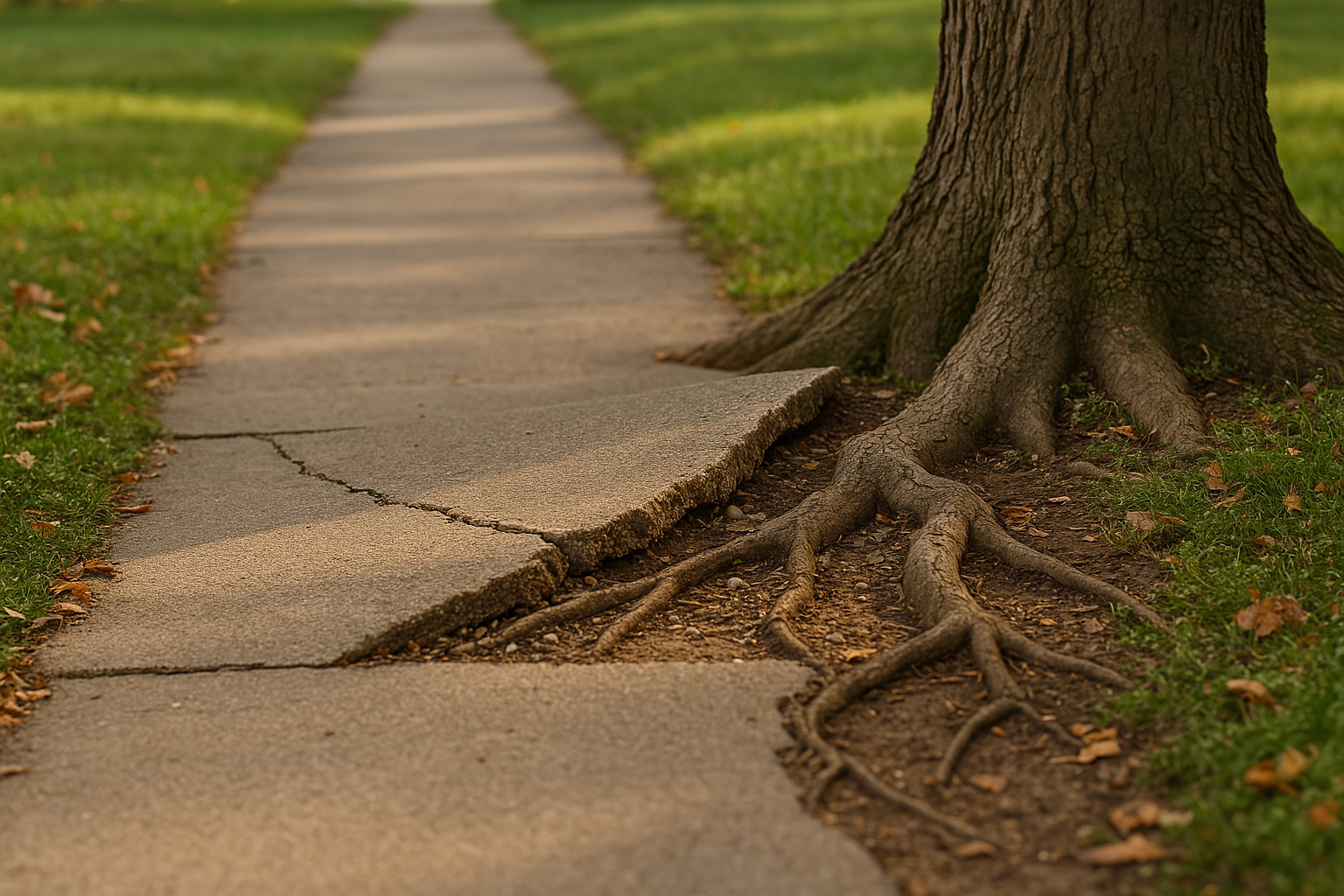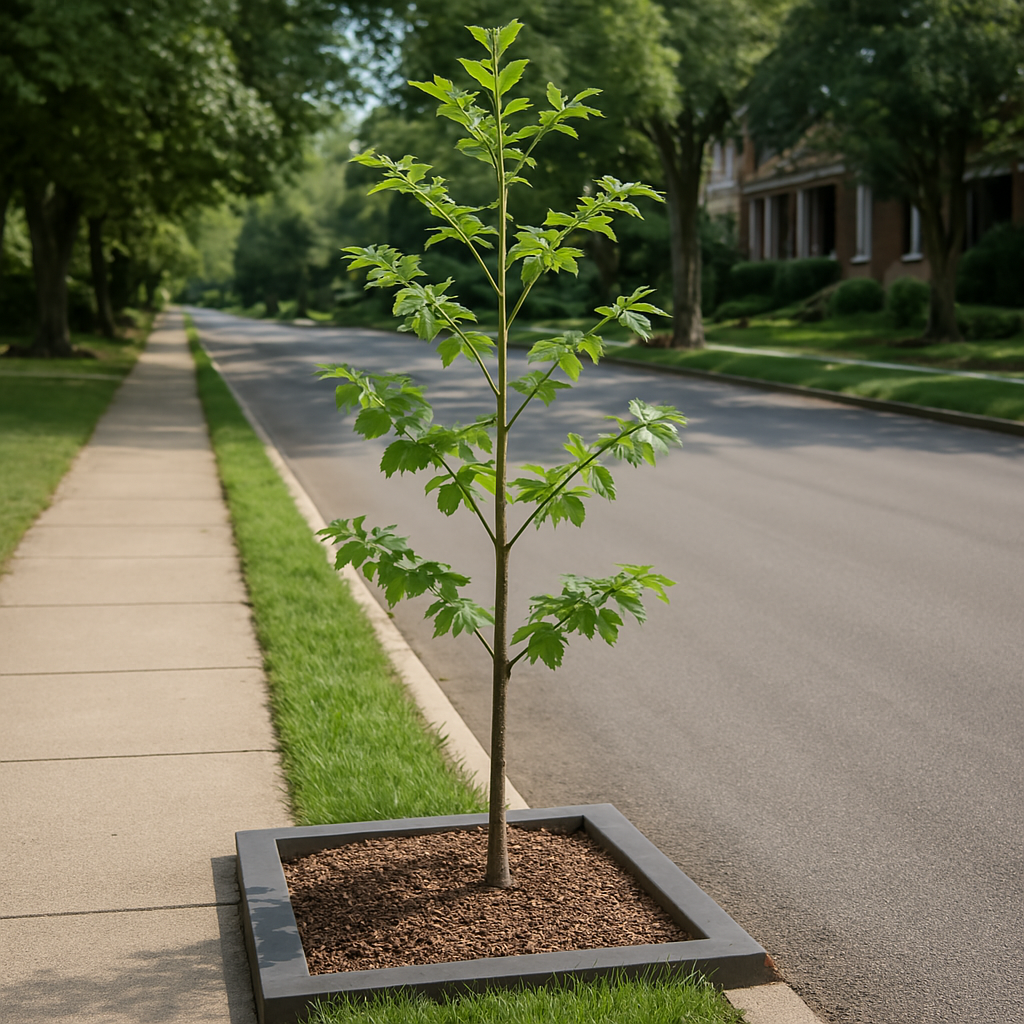Why Do Trees Break Sidewalks in Louisville?

If you live in Crescent Hill (40206), Clifton, or St. Matthews (40207), you’ve probably tripped on a cracked sidewalk or watched crews dig around giant roots to pour new concrete.
It’s not always the tree’s fault. Many of these problems come from:
- Planting too close to hardscapes
- Choosing fast-growing species with aggressive roots
- Lack of root space due to narrow planting strips
- Soil compaction forcing roots to surface
Once the roots hit the concrete, they follow the path of least resistance — up and out.
What Trees Cause the Most Damage?
We love trees. But some just aren’t meant for narrow strips or tight residential sidewalks.
Avoid these near pavement in Louisville:
- Silver Maple – huge, shallow roots
- Bradford Pear – invasive and root-lifting
- Sycamore – beautiful but bulky
- Willows – thirsty and aggressive
These trees often outgrow their space, damage infrastructure, and require costly maintenance.
Tree-Safe Alternatives for Louisville Neighborhoods
Here are species that play nicer with sidewalks (when planted with care):
- American Hornbeam – small, strong, and root-friendly
- Eastern Redbud – ideal for tight spots
- Serviceberry – native, compact, great for pollinators
- Bald Cypress – deep-rooted and stable (with room)
Live in Old Louisville (40208) or Highlands (40205) with limited root zones? These trees have proven themselves time and again.
Planting Tips That Protect Your Sidewalk

It’s not just what you plant — it’s how you plant it.
- Give space: Aim for 4+ feet between tree and sidewalk
- Use a root barrier: These plastic shields direct roots downward
- Dig wide, not deep: Shallow planting holes help roots spread naturally
- Mulch smart: Use a flat ring of mulch to insulate roots
In tighter spots like Germantown (40217), these steps are crucial to avoid future cracking and lifting.
Already Seeing Sidewalk Damage?
Don’t panic — it doesn’t always mean the tree has to go.
We can:
- Evaluate root direction and damage
- Prune surface roots (only when safe)
- Suggest sidewalk redesign options
- Recommend species replacement, if needed
Book a tree health assessment and we’ll take a closer look before you make a call.
When It’s Time to Remove and Replant
If a tree has completely destroyed the surrounding concrete or is posing a trip hazard, removal may be the safest option.
We’ll guide you through:
- Safe removal methods that minimize damage
- Stump grinding for clean replanting
- Choosing the next best tree for your space
Check out our pruning and removal services.
Stay Ahead of the Damage
The best sidewalk is one that stays intact. The best tree is one that’s planted with a plan.
- Contact New Leaf Tree Service for site-specific advice
- Book a consult for existing root issues
- Explore better planting options to future-proof your street
Let’s keep your trees and your sidewalks working together — not against each other.
